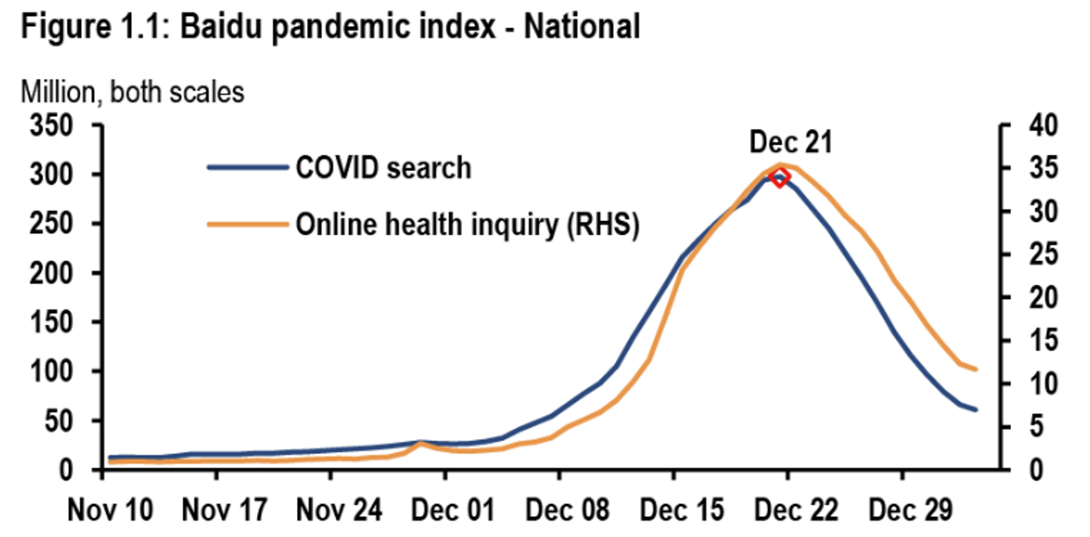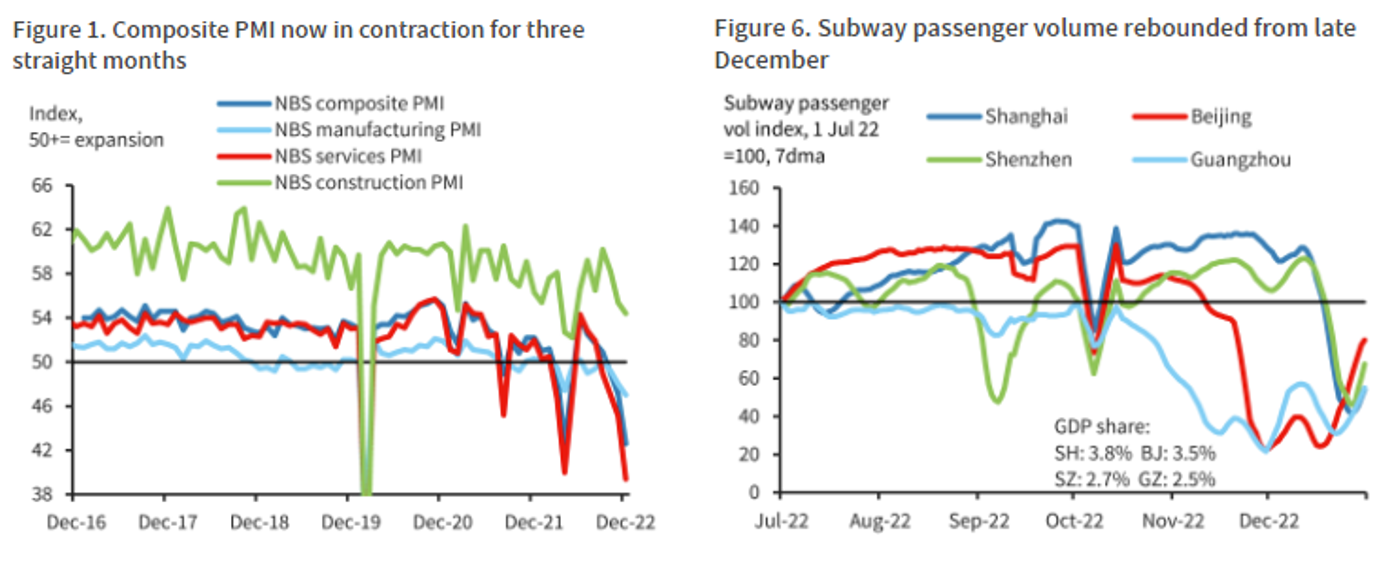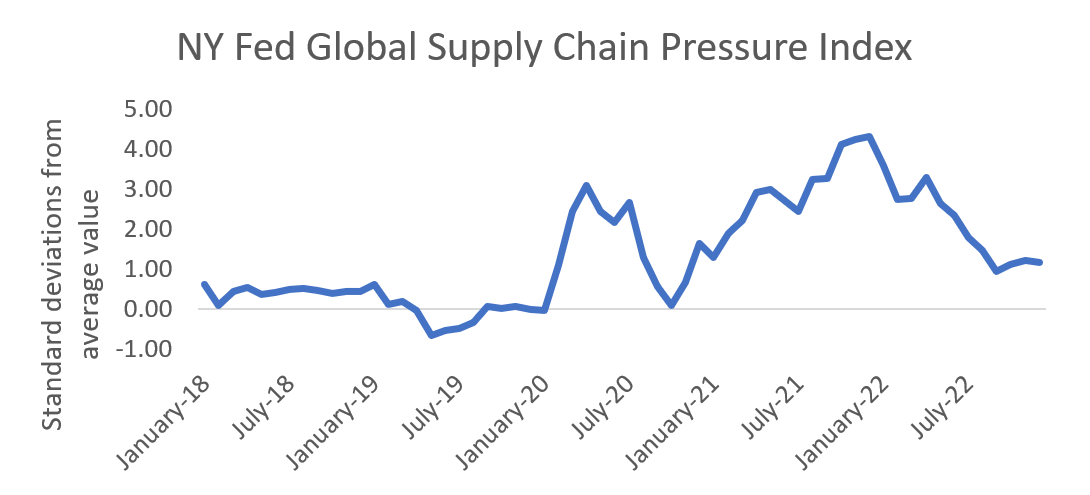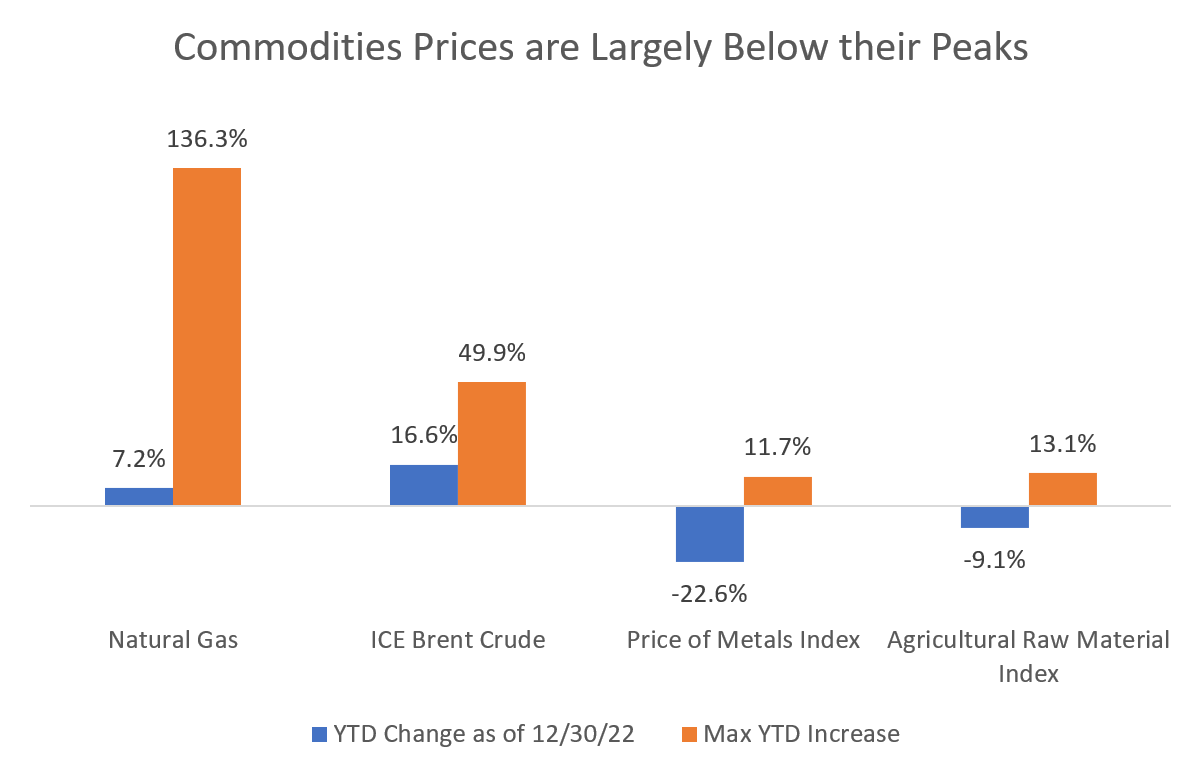
China’s Reopening: Transition From Zero COVID and The Global Economy
How China’s reopening may have implications on the global economy and credit markets
The last domino is falling.
Nearly three years ago, the world shut down in response to the COVID-19 outbreak, causing a massive slowdown in consumer spending and major disruptions to supply chains. Since then, as people have logged off Zoom and emerged from their homes, nations have started adjusting to the “new normal,” slowly lowering testing requirements, reducing quarantine times, and re-opening travel. By the end of 2022, the pandemic was all but in the rearview in most countries and markets, with one unyielding exception.
National Impact
While most nations had reduced or eliminated pandemic restrictions by 2022, China continued to operate under a “zero COVID” policy, opting instead for draconian lockdowns and “closed loop” processes to maintain manufacturing during quarantine periods. These measures negatively impacted consumer spending and created prolonged supply chain headaches.
The Chinese government had remained largely committed to this strict policy well into 2022, but nationwide protests and the impact to China’s economy became too great to ignore, resulting in the rollback of zero-COVID restrictions on December 7th, 2022. Negative tests are no longer required to enter most places, and those who test positive are able to quarantine at home if they have mild or no symptoms. Tourists can now enter the country without testing. And most importantly, China reduced the ability of local governments to implement regional lockdowns, which prior had significantly impacted supply chains.
As the world’s second largest economy, China’s reopening has significant implications for the global economy and credit markets as well. Although China’s economy should rebound in the long-run, this recovery will not materialize overnight, as the rapid reopening has resulted in a surge of Covid-19 cases. Due to the lockdowns and limited vaccine distribution, China’s population has limited natural immunity to the virus, leaving them susceptible to severe illness. This will inevitably offset some of China’s reopening benefits for manufacturing firms, which will be able to operate without fear of lockdown but may now face labor shortages as workers become infected and call out sick.
Additionally, despite looser policies, many in China have opted for self-imposed isolation and restrictions out of fear of infection, muting the rebound in consumer demand. However, analysts predict the surge in Covid-19 cases in China will peak in January, and that some places such as Beijing and Chengdu have already reached their peak1. Thus, China may see economic activity begin to normalize towards the end of Q1.
 Note: Baidu pandemic index tracks Covid-related search queries as a proxy for changes in positive COVID-19 cases.
Note: Baidu pandemic index tracks Covid-related search queries as a proxy for changes in positive COVID-19 cases.
Source: Baidu, J.P. Morgan
 Source: Wind, Barclays
Source: Wind, Barclays
Global Impact
As countries around the world face recession in 2023, the reopening of China creates positive opportunities for the global economy. While many developed markets such as Europe and North America are looking at slower or negative growth following a post-pandemic boom, China is poised to do the opposite upon a wider reopening. This may provide a tailwind for global growth and support corporate credits challenged by persistent inflation and restrictive policy in the US and Europe.
Furthermore, the halting of major lockdowns marks the beginning of the end for one of the pandemic’s greatest and longest-lasting economic challenges: supply chain bottlenecks. A normalization of demand and a loosening of global pandemic restrictions has led to a significant recovery in supply chains, which have been approaching but not quite reached pre-pandemic levels of efficiency. Throughout the pandemic, volatility in manufacturing stemmed from the ability of the Chinese government to lock down manufacturing regions for weeks, reducing capacity despite closed-loop operations and companies diversifying their supply chains. The end of these shutdowns may reduce volatility in capacity utilization for manufacturing, which would reduce supply chain stress, reduce input costs, and ease inflationary pressure.
 Source: New York Fed
Source: New York Fed
Although the reopening of China may benefit the global economy, there is a risk that higher demand could put upward price pressure on commodities, adding to inflation. While commodity prices—most notably energy prices—have fallen in recent months and are well below their peak, the war in Ukraine, which caused severe supply shocks, remains unresolved and is unlikely to end in the foreseeable future. As a result, supply remains relatively constrained and input costs are sensitive to changes in demand. Therefore, an increase in consumer spending in China could create a spillover effect in which upward inflationary pressure spills to other economies through commodity price movements. This would complicate the efforts of central banks trying to bring inflation back towards its target range and could result in an increase in terminal rates around the world, as well as an increase in the amount of time central banks must keep rates elevated. However, the magnitude of higher demand from China relative to global demand, and whether it would offset price declines stemming from recession risk, is yet to be seen.
 Source: Bloomberg, St. Louis Fed
Source: Bloomberg, St. Louis Fed
Conclusion
Ultimately, it is too early to tell how China’s reopening will affect the global economy, but given China’s position as a global superpower and manufacturing hub, the outcome is poised to have significant implications for global credit markets. On the surface, a rebound in China’s economy will benefit companies who face slower or negative growth in other markets. These companies may also see supply chain problems resolve as production becomes less volatile, which would lower input costs and decrease lead times. On the other hand, these benefits may also be offset by upward pressure on commodity prices, which could result in higher rates for longer should inflationary trends dissuade central banks. Regardless of the outcome, it will take time to materialize as the country works through its outbreak and citizens learn to return to a pre-pandemic lifestyle.
1https://live.barcap.com/PRC/publication/CL_TEJ-IH4gfiB-IH4g_63b37e6f1a58a66efcb930c1
Please click here for disclosure information: Our research is for personal, non-commercial use only. You may not copy, distribute or modify content contained on this Website without prior written authorization from Capital Advisors Group. By viewing this Website and/or downloading its content, you agree to the Terms of Use & Privacy Policy.

